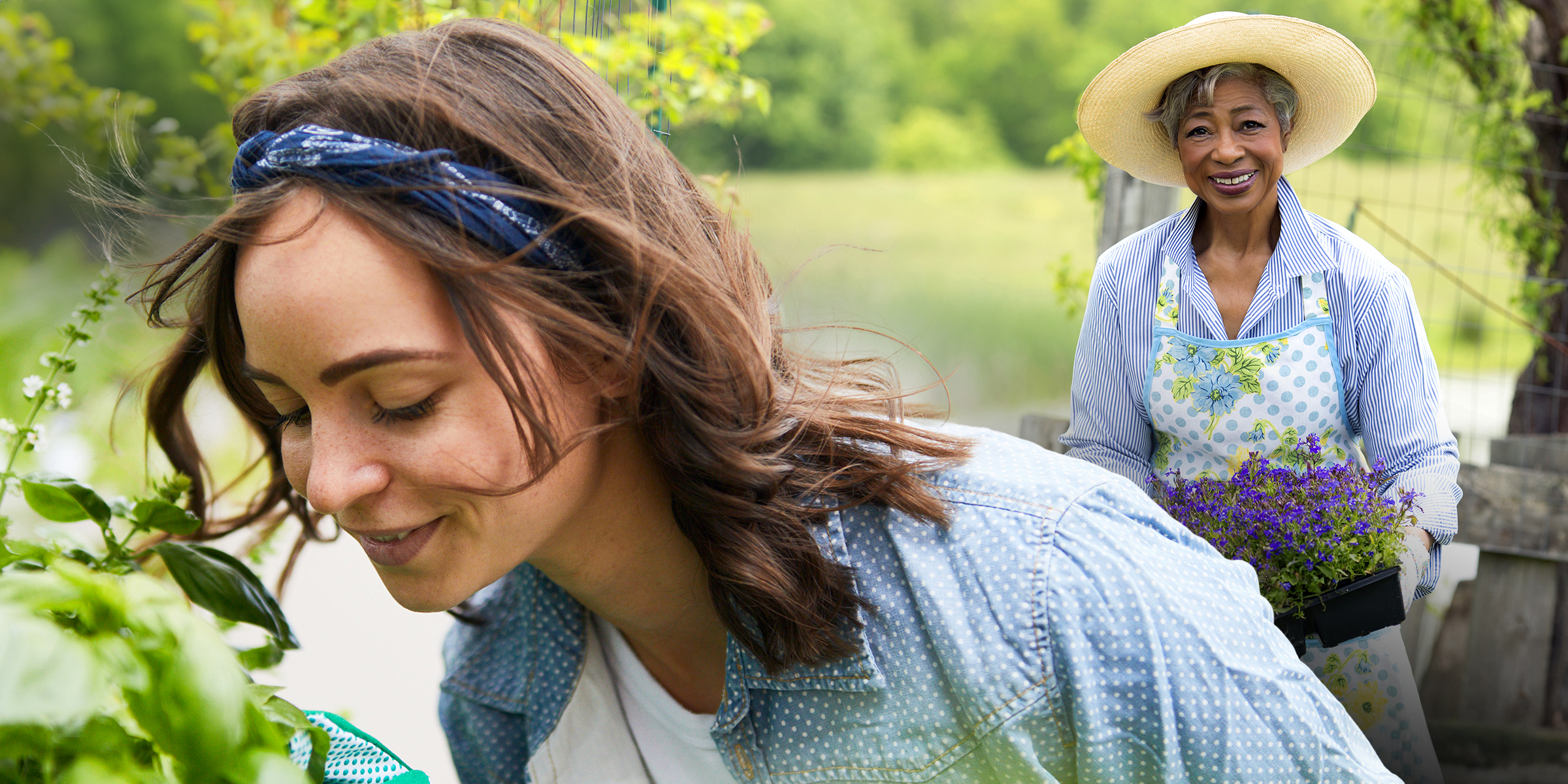
Fun Facts about Gardening: Discover Some Tips and Tricks alongside Interesting Tidbits

If you're someone with a green thumb, you're probably already familiar with the ins and outs of your garden. However, these 7 fun facts about gardening may enrich your knowledge about the secret wonders of your plants and soil.
For many, a garden is an oasis, a sanctuary where one can unwind and indulge in the therapeutic process of gardening. However, this lush and green space attached to one's home is also crawling with millions of microorganisms the naked eye cannot see and is rich with fascinating facts.
If you're an avid gardener, continue reading to discover 7 fun facts about gardening — including how plants can respond to sounds — and discover that the secret weapon to ward off unwanted pests or to grow sweeter tomatoes is most likely already in your kitchen.

A smiling couple planting flowers | Source: Getty Images
1. You can change the color of hydrangeas by altering the pH level of the soil.
If you're growing hydrangeas in your garden, you may be pleased to know that you can alter the color of their appearance to your taste. Yes, chemically customizing your plants to your liking is possible.
The amount of aluminum a plant can absorb from the soil — which is determined by the soil's pH and phosphorus levels — alters the color of hydrangeas to either pink or blue.
It is recommended to get a soil test before applying any products to know your soil's exact pH and mineral content. To turn hydrangeas blue, add soil acidifiers that will lower the soil's pH and aluminum levels. To turn hydrangeas pink, add lime to raise the soil's pH level.

Hydrangeas | Source: Getty Images
2. You can grow orchids that smell like chocolate, honey, vanilla, and more.
While many flowers may have a sweet and earthy scent, orchids are very fragrant plants, and if you grow the right one, you can have your garden smelling like your favorite dessert.
Dendrobium parishii orchids are known to smell like berries, while encyclia radiata and maxillaria tenuifolia orchids smell like coconut. If you enjoy the scent of vanilla, try planting a few encyclia fragrans orchids for that warm and sweet aroma.

Orchids | Source: Getty Images
3. Adding baking soda to the soil will help you grow sweeter tomatoes.
If growing flowers is not your thing, and you're more interested in harvesting, then all you need to do is make a trip to your kitchen for a single ingredient to ensure you grow sweeter tomatoes.
Baking soda, also known as sodium bicarbonate, is highly alkaline and counteracts acidity. As tomatoes are naturally acidic, by sprinkling baking soda into the soil of your tomato plants during the growing process, you will lower the soil's acidity and can look forward to enjoying sweeter tomatoes once ripe.

A man harvesting tomatoes | Source: Getty Images
4. Plants respond to sound.
Over the years, research has shown that plants respond to sound and that wind or vibration induces changes in plant growth, and their response to other audio cues can help plants survive.
The plethora of research was inspired by King Charles' comment about the importance of talking to plants. While the royal member was mocked back then, scientific evidence has pointed to the fact that plants can indeed respond to sounds.

A woman watering plants | Source: Getty Images
5. Between 2015 and 2017, one teaspoon of soil had more bacteria and microorganisms than there were people on Earth.
Between 2015 and 2017, when the world's population was less than a billion, it was revealed that one teaspoon of soil contained more living organisms than there were people in the world. Research estimated that a teaspoon of productive soil generally contained between 100 million and 1 billion bacteria.

A man holding soil with a sprouting plant | Source: Getty Images
6. The biggest garden in the world is in France.
In the 17th century, André Le Nôtre built the world's largest garden in Versailles, France, for King Louis XIV. Many modifications have been made over the years, and at present, the famous formal garden sits on 247 acres of land.
7. You can use coffee to keep snails and slugs out of your flower and vegetable beds.
If you've noticed that slugs and snails are causing havoc to your plants, then all you need to do is brew coffee and sprinkle it across your garden. The caffeine is a toxin to slugs and snails and is sure to keep the slimy creatures away.
You might also be interested in reading 7 Fun Facts about Lavender.